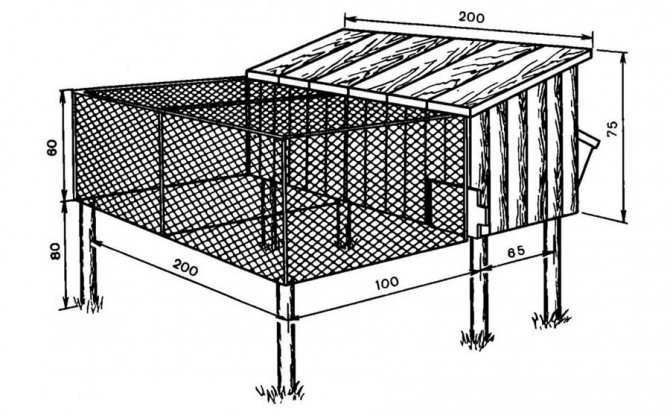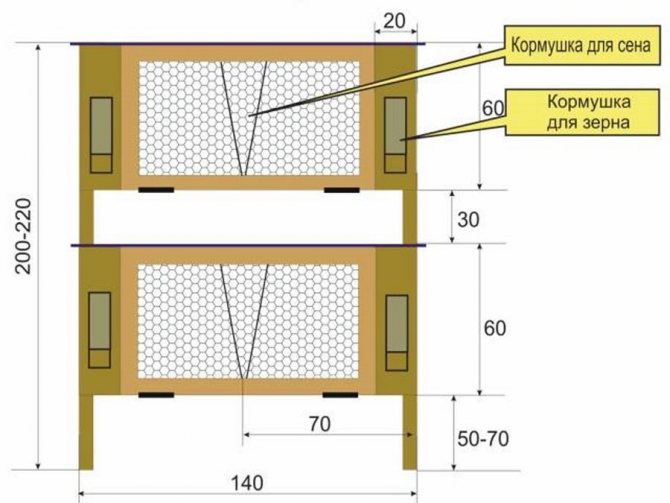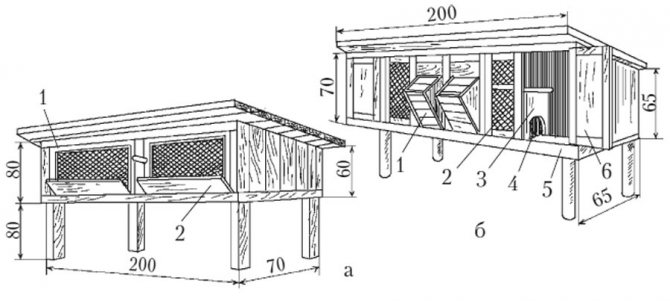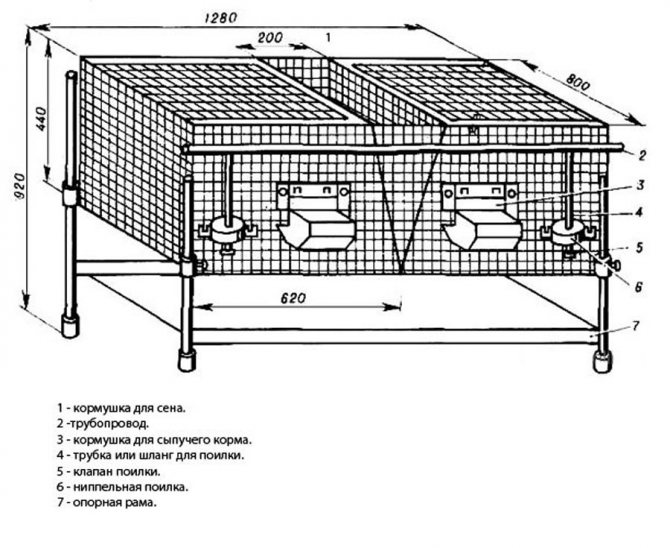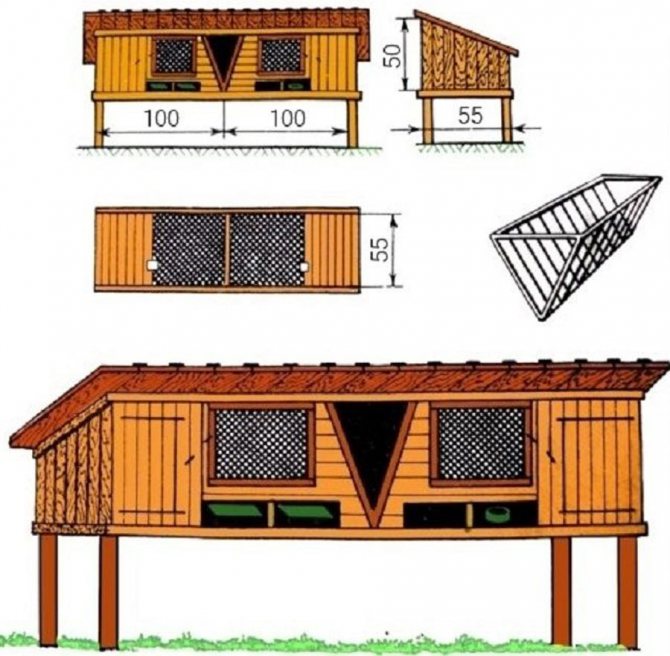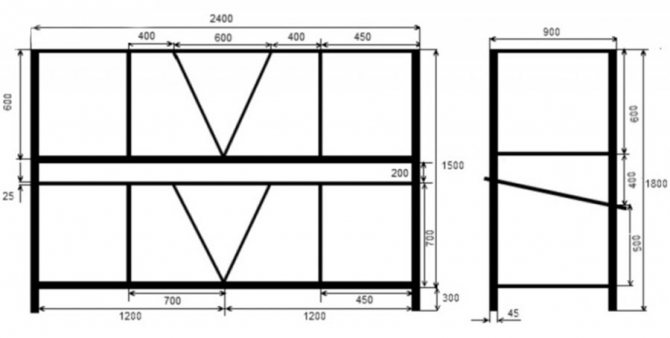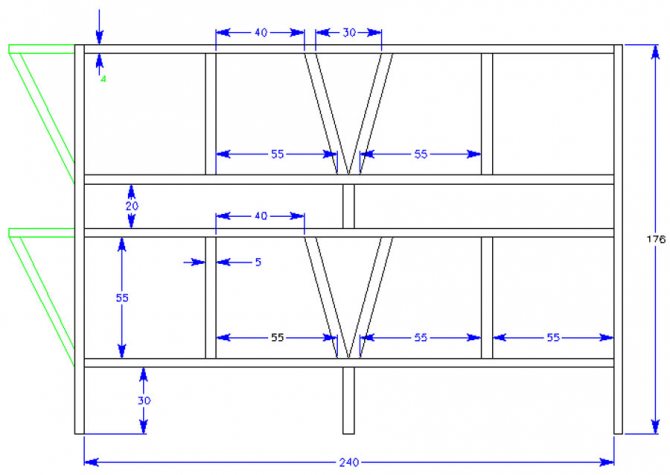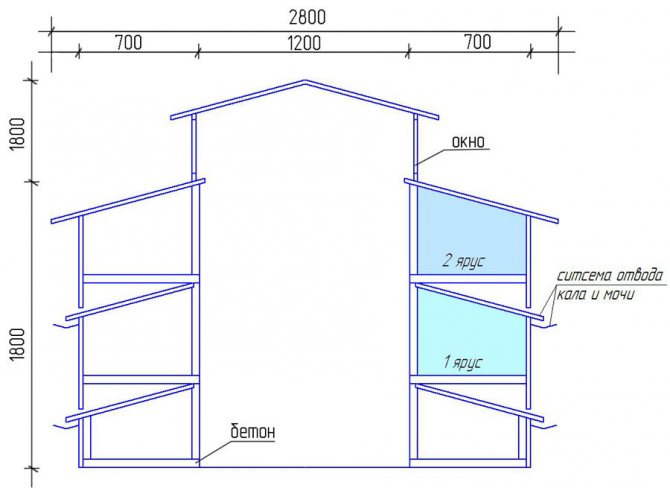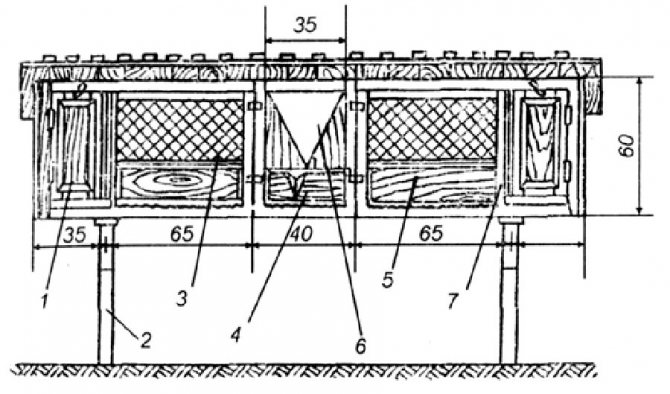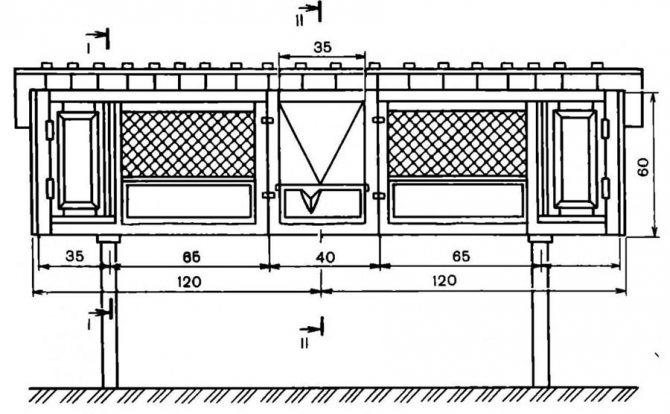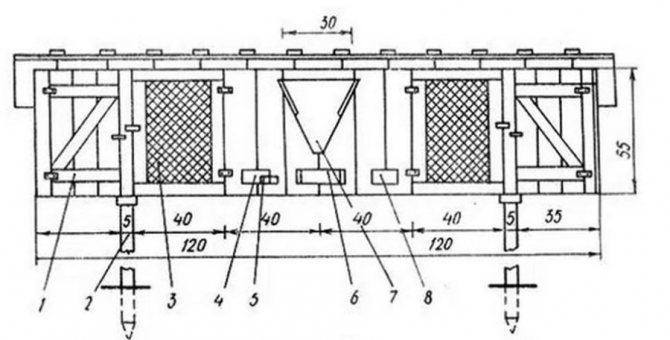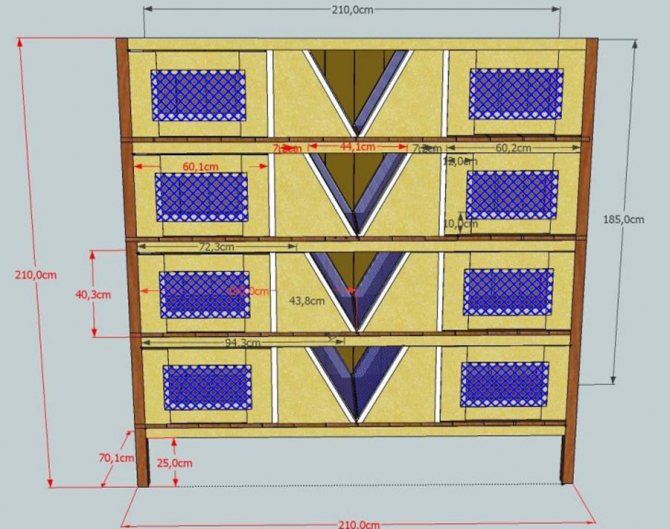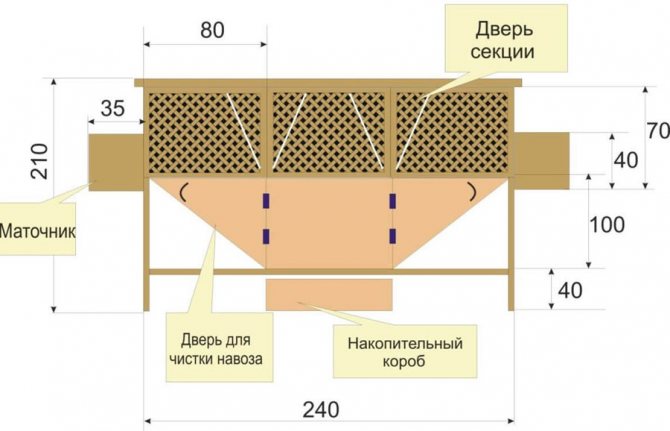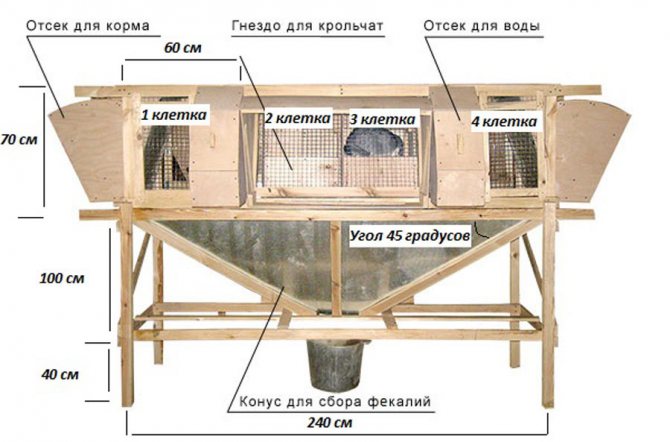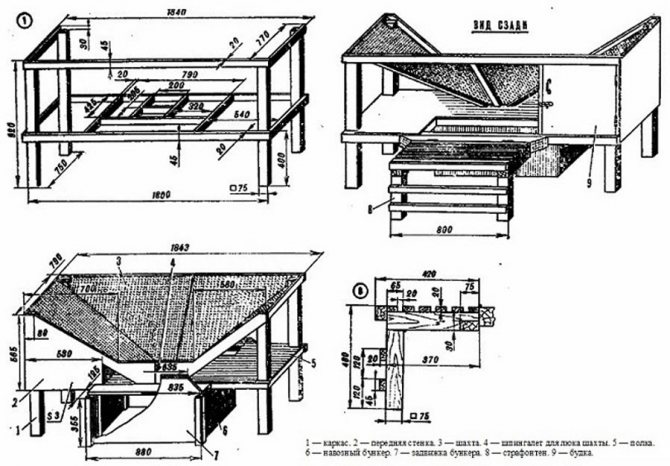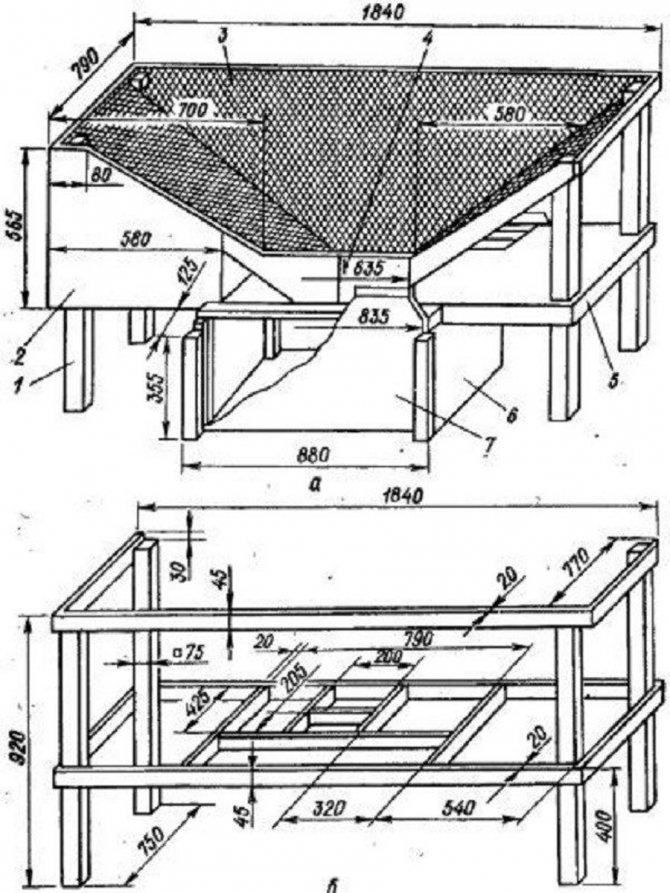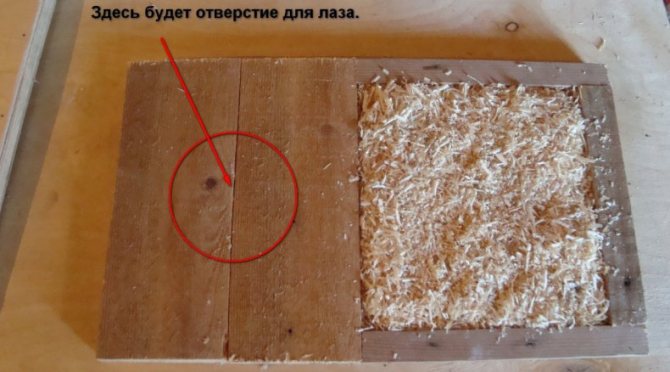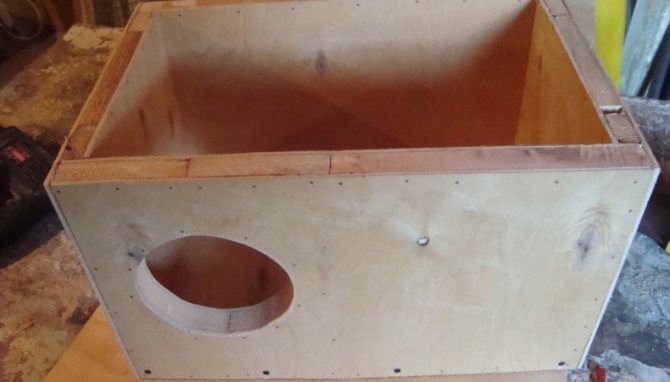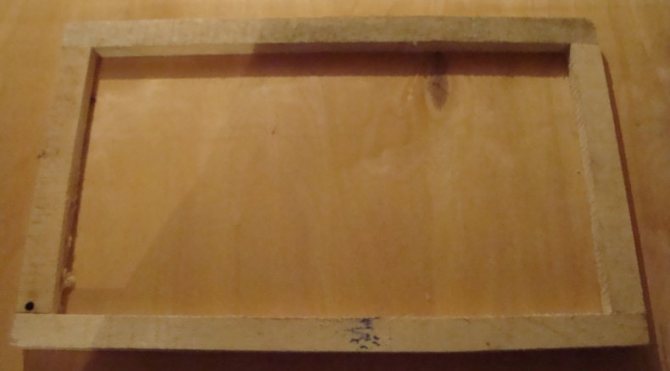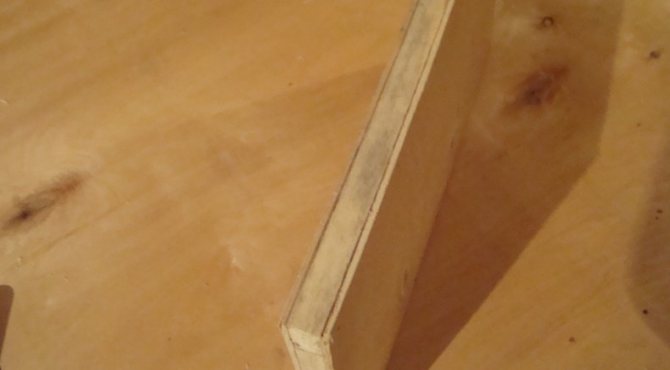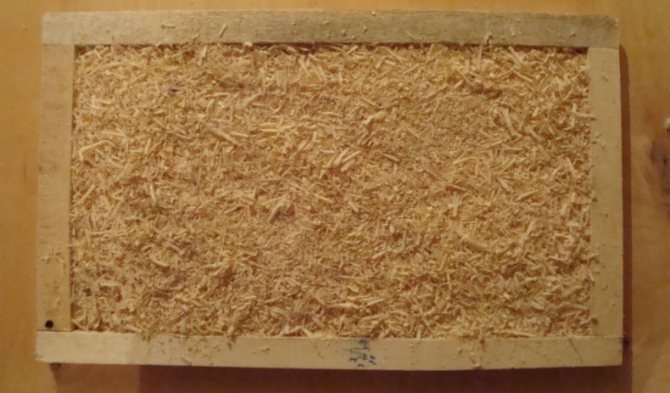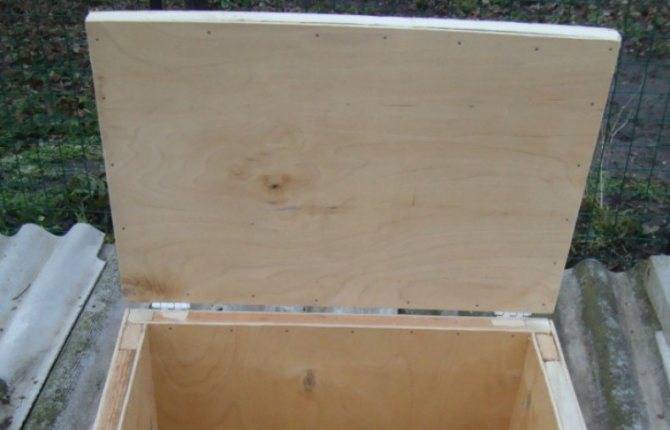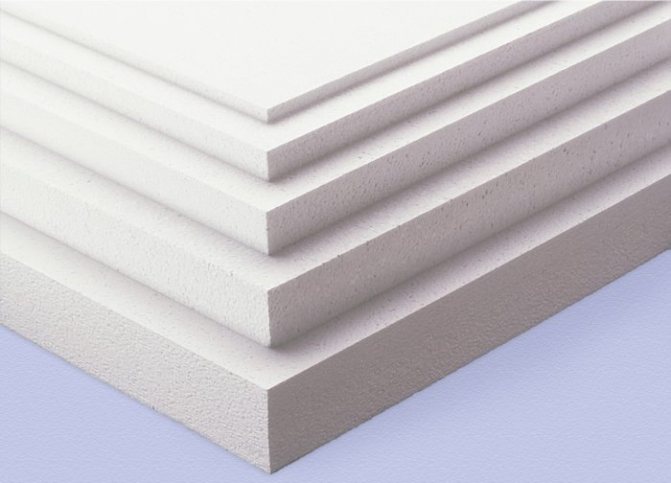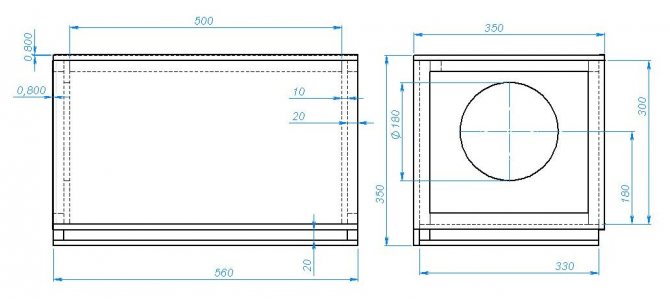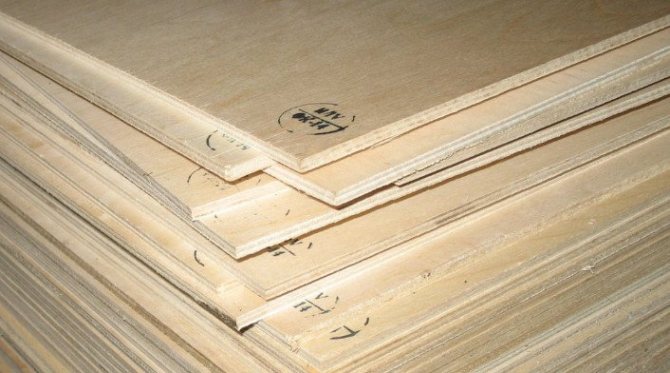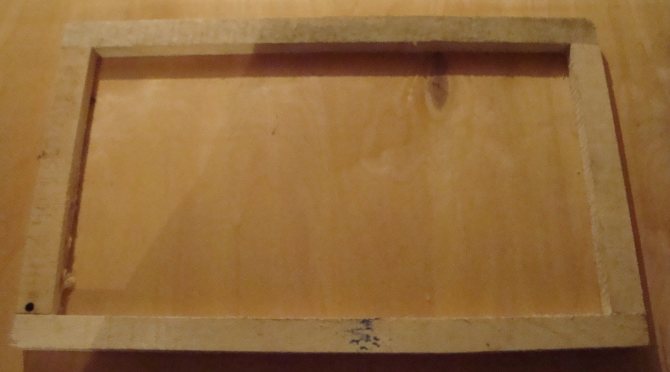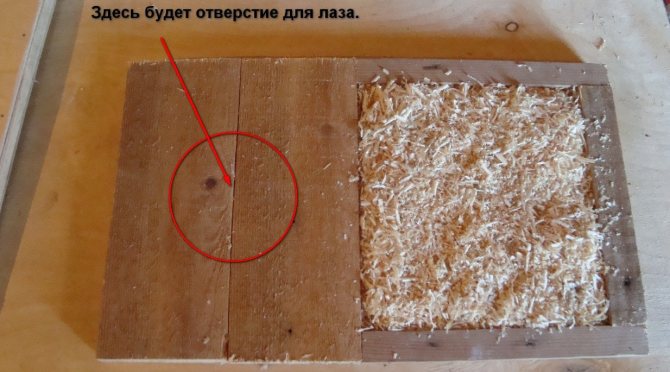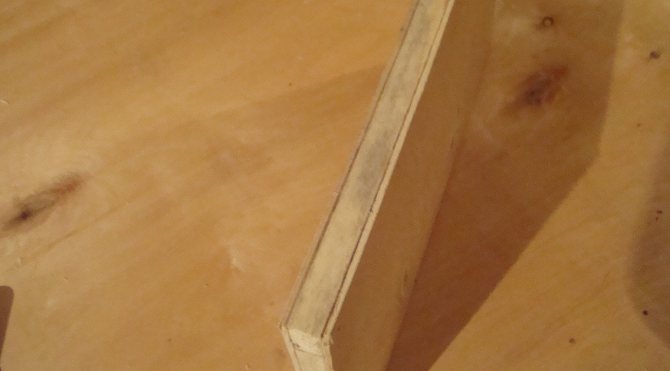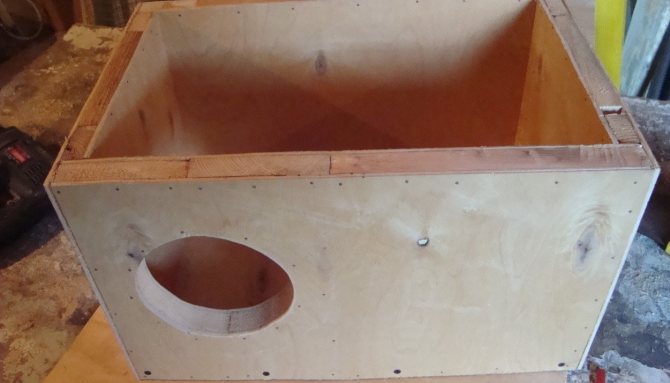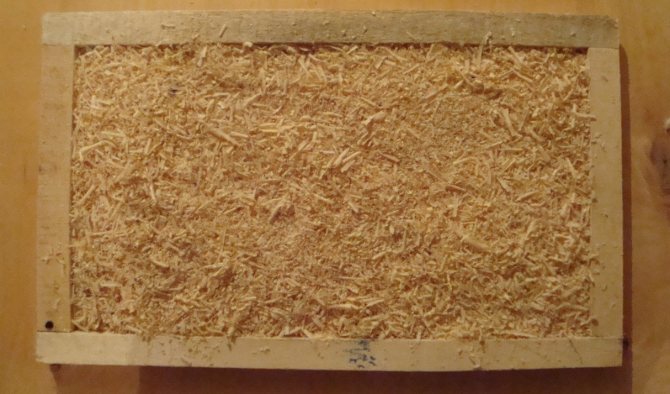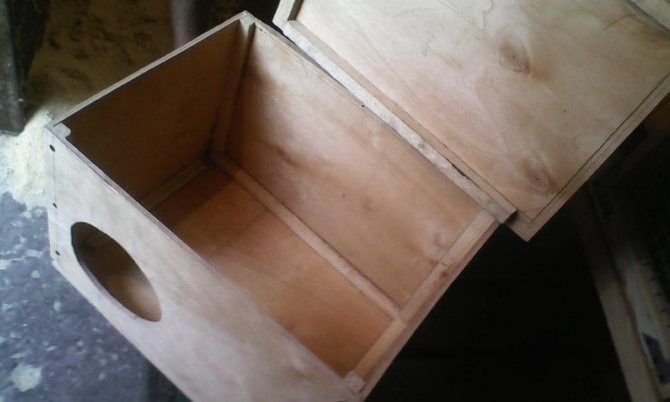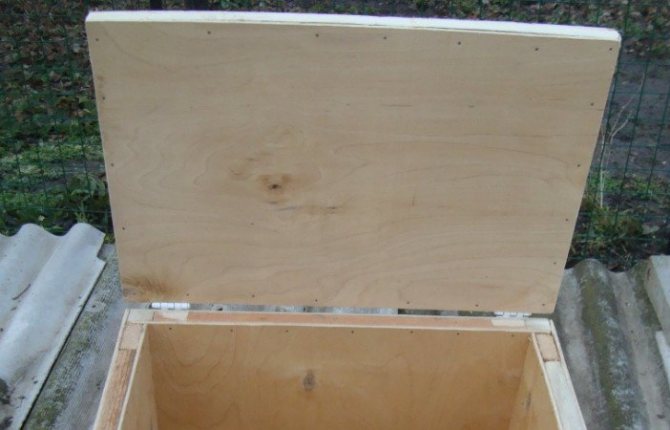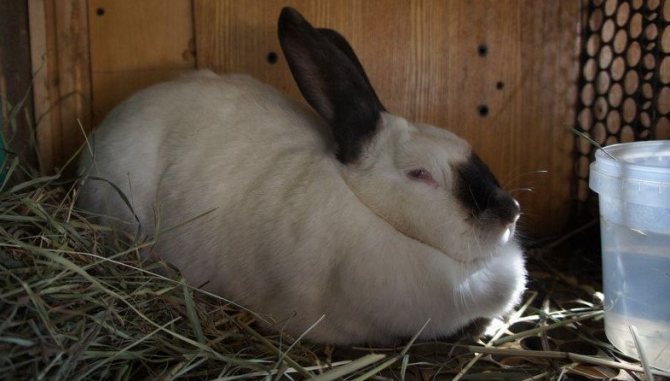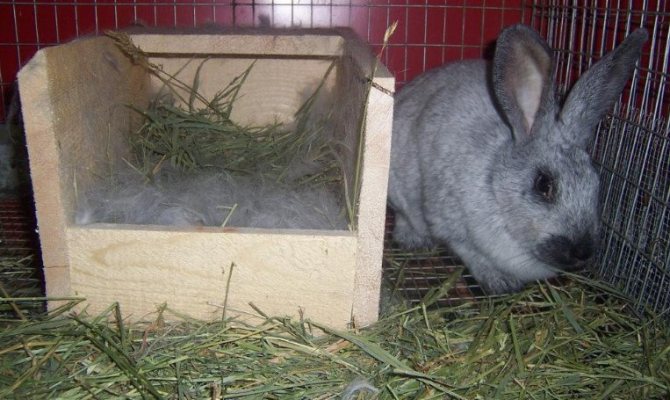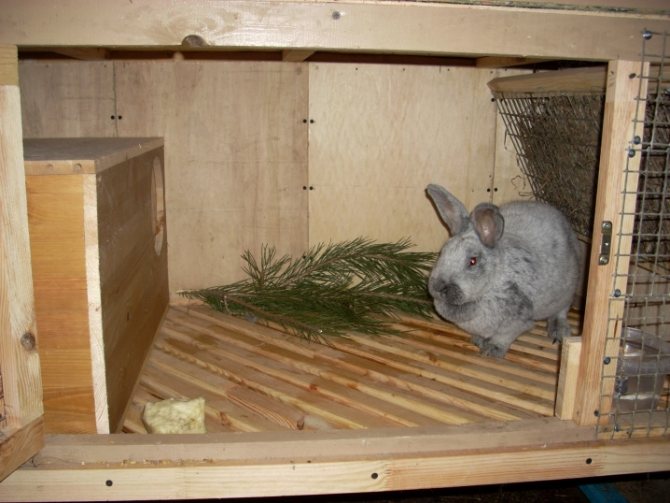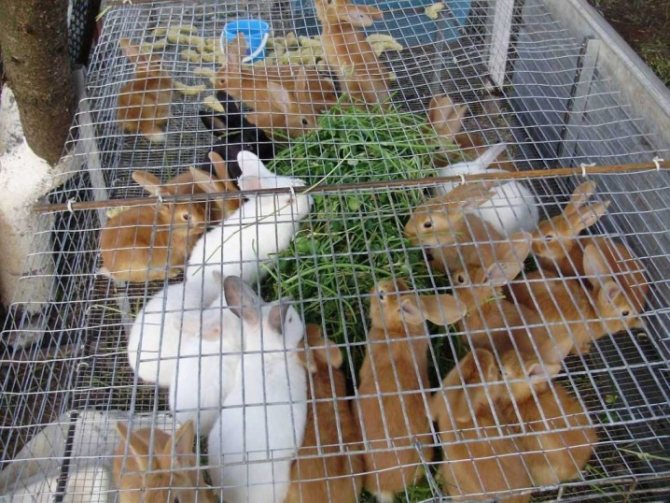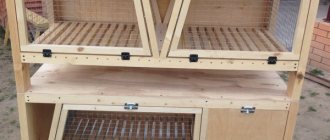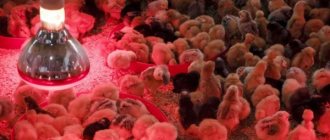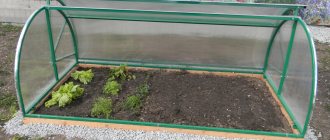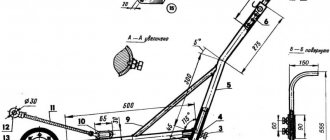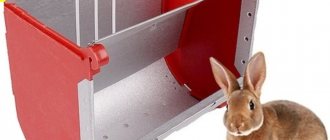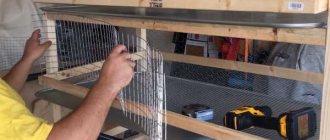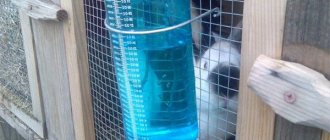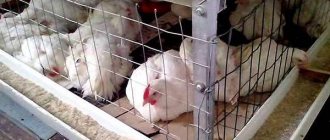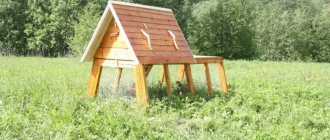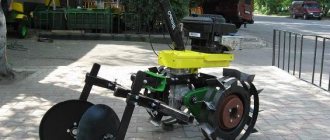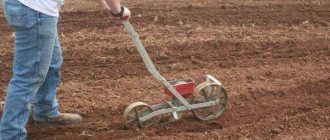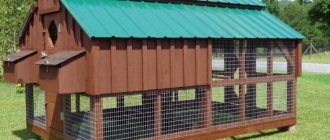A mother's house for rabbits is a necessary attribute in a cage, it is in it that the female feeds small rabbits. In nature, these animals dig holes, which serve as a shelter for the female with offspring. It is important for the farmer to ensure that the conditions for keeping rodents in captivity are as close to natural conditions as possible.
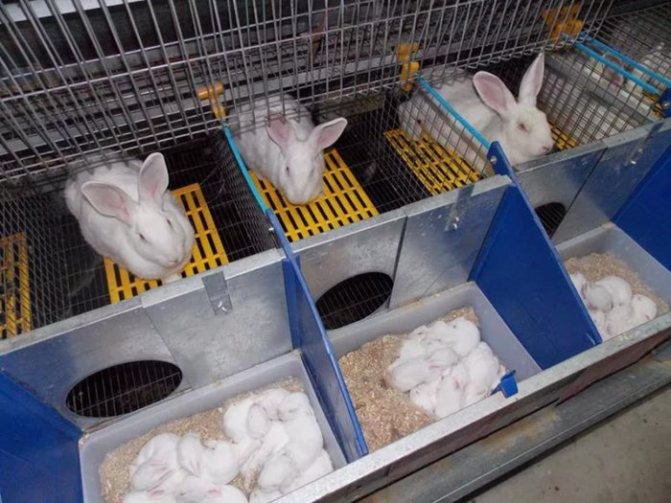
Rabbit brood
What is the mother liquor for?
In the wild, rabbits live in burrows where they feel completely safe. This is especially important during childbirth, when the newborn offspring are especially sensitive to drafts and hypothermia. In the hole, the rabbit can provide the necessary conditions for the rabbits. But with home breeding, rabbits are usually kept in cages, which is not very suitable for breeding. Therefore, the main task of the breeder is to bring the conditions as close as possible to the natural environment. This can be achieved by making a rabbit brood compartment.
The mother plant must meet certain requirements. It must be: - safe; - warm and dry; - clean; - comfortable.
Dimensions and Drawings
Before starting construction, you should decide who will live in the house, prepare a layout: calculate the parameters, draw up drawings, draw sketches of the future structure. The floor is made of timber. The slats are laid out at intervals so that animal waste is dumped into the pallet. Side and back walls are made of planks. A chain-link is pulled on the front. The house is supplied with a feeder, a sippy cup, a sennik. The manger and the entrance are covered with a net inside so that the rabbits do not spoil them.
Cage drawings for young animals
Young rabbits are settled at the bottom of 6-10, for breeding - no more than 5-6. They are kept in a large roomy cage, to which an aviary is attached.
To create an accurate drawing, the minimum area that one individual will occupy is calculated. For babies it is 0.15 m². It reaches no more than 3 m in length, 1 m in width, and 0.7 m in height.
The dimensions of the pen are identical. The floor is covered with beams, and a metal mesh is pulled around. To get into it, they make a hole.
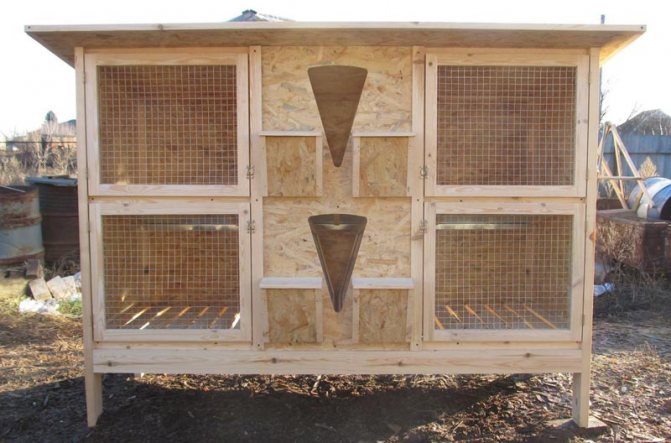

Blueprints of an adult rabbitry
For adult representatives, the unit of occupied area for calculating the total increases to 0.5 m². For them, cages are built with separate sections. If necessary, make them multi-tiered, but single-tiered ones are preferred.
Multilevel structures are more difficult to keep clean.
The dimensions of the houses depend on the breed, age, and sex of the rabbit. Adults are populated in 3 in a single section, in a double section - 5-6 specimens. Section dimensions: 0.8-1.1 m, for double the whole length 1.3 m; minimum depth 0.6 m.
Young males that have reached the age of three months are divided into two groups: the slaughtered ones are castrated and settled together, the breeding ones are seated one at a time. For thoroughbred rabbits, houses are made with dimensions of 0.7 x 0.7 x 0.6 m.
Drawing options, all pictures are clickable, click to enlarge:
Bunk shed
It is a structure of sections, built on several levels. Such constructions are used in street maintenance. They are installed at a height of 0.6 m from the ground.
For the construction of the foundation, concrete is used to securely fasten the structure. The total length reaches 2 m, the width is 1 m. All cells in the shed are the same, stand close to each other, covered with a canopy.A waste tray is organized below.
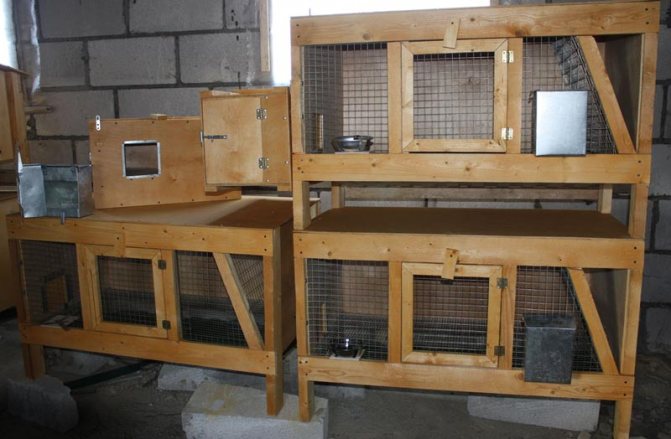

The advantage of such content is that the animals spend the whole spring and summer in the fresh air. Cleaning the houses does not take much time and effort.
Options for drawings of two-tier sheds, click on the picture to enlarge it:
Dimensions of the rabbitry with the mother liquor
A portable house for a pregnant or lactating female and babies is built separately from other structures. To calculate the occupied area, 0.7 m² is taken per unit. Standard dimensions:
- length - 1.2 m;
- width - 0.6 m;
- height - 0.7 m.
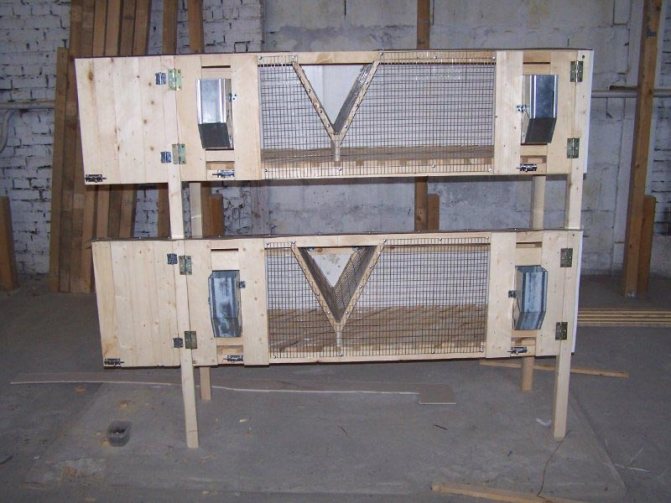

The motherboard is made with a separate door or a sliding door, its parameters are: 0.4 x 0.7 x 0.6 m. Laz 0.2 x 0.2 m. The frame is made of plywood, in two layers, between which insulation is laid.
For the winter version, the floor is made with heating: a heating pad is laid between the layers, the cord for connecting to the network is brought out so that the animals do not gnaw it. The roof is covered with a water-repellent material.
Drawings of a rabbitry with a mother liquor, click on the photo to enlarge it:
Double cells
Used to accommodate several animals. On the sides, a nesting compartment is attached to them. The frame is built from boards, the floor in the stern compartment is covered with a net, in the uterine compartment - with a bar. For roughage, a nursery is made on the front wall. The drinker and the feeder are hung on the door.
Parameters:
- length 2.1-2.4 m;
- width 0.7 m;
- the height of the facade is 0.5-0.6 m, with a bevel towards the rear wall, at which it will be 0.4 m.
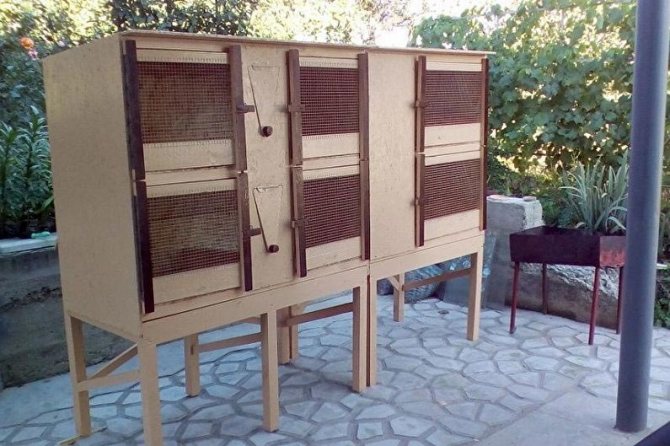

Drawings of the rabbitry Zolotukhin
Nikolai Ivanovich Zolotukhin studied the behavior and lifestyle of rabbits in the wild for many years. Based on the elaborated information, he developed a structure for comfortable accommodation of animals at home. These are three-tiered cells with parameters:
- length 2 m;
- width 0.8 m;
- height 1.5 m;
- the floor from the rear facade is 0.2 m covered with a metal mesh, the slope from the front wall to it is 0.05 m;
- square doors, side length 0.4 m.
Variants of drawings according to Zolotukhin. Click on the picture to enlarge it:
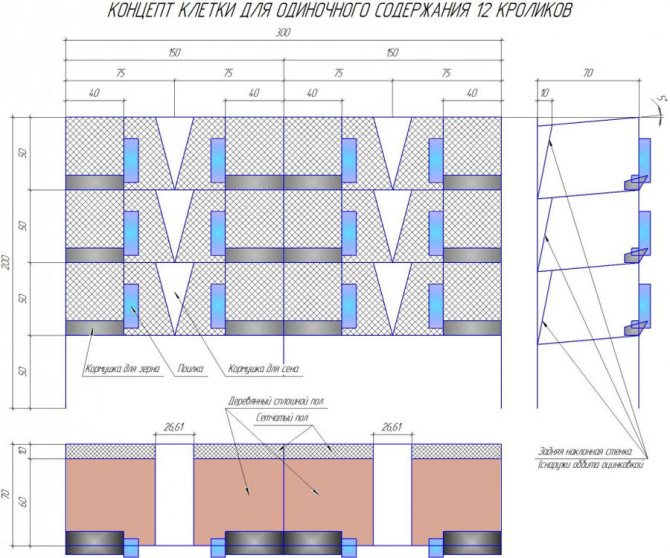

For construction you will need:
- wooden boards, beams;
- chain-link or mesh made of metal;
- iron sheets;
- slate;
- polycarbonate.
Construction scheme:
- Fabrication of the frame according to the standard method, dividing into two parts with a gap between them. A sennik is placed there.
- The floor is covered with slate, departing from the rear facade 0.2 m. A mesh is pulled over this area.
- The backdrop is covered with polycarbonate. The sheets are installed at a certain angle, directed to the end of the upper tier slate. At the very last floor, the sheet will be straight. This serves to facilitate cell cleansing. Waste is rolled through a mesh in the floor into a pallet along the back wall.
- In the case of the nest compartment, the door is made of boards with insulation between the layers. In the main part - from the grid.
- The walls in the summer compartment are also made of mesh, separated by a partition. In winter, they remove it and get a large house for keeping young individuals.
- The feeder is attached to the front wall; one third of the part is inside. The bottom is angled so that it can be filled from the outside without disturbing the animals. The cup is installed inside.
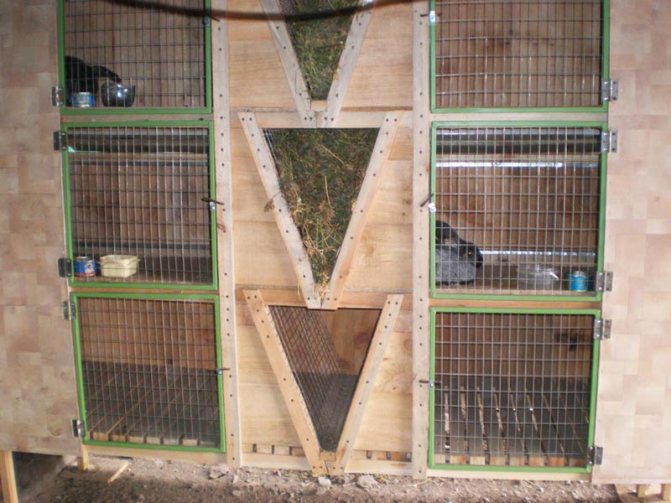

The rabbitry of Mikhailov
Another model belongs to the famous rabbit breeder Igor Nikolaevich Mikhailov. It is based on the division of the room into three sections: upper, lower, stand.
Each of them performs its own function: the top is the tiers where animals live. The bottom is a tray for collecting and storing feces. The base part is designed to fix the structure.
Variants of drawings of Mikhailov's rabbitry. Click on any picture to enlarge it:
Dimensions of the structure:
- total length 2.4 m, for one section is 0.6 m;
- width 0.6 m;
- height 1 m, including the upper part 0.7 m;
- the length of the mother liquor is 0.4 m, the width is 0.35 m;
- there are no clear dimensions for the conical part intended for waste collection.
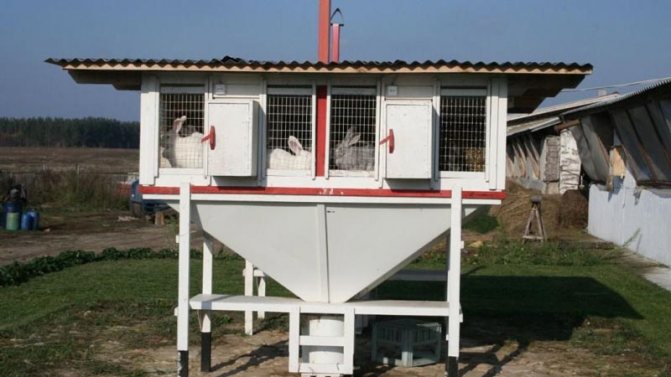

The body is made of iron; for insulation, the inside is upholstered with wood. The frame base is used for the stability of the structure. Its height is 1.4 m.
Types and designs
Rabbit breeders usually use different queen cells. Which one to choose depends on many factors:
- the number of rabbits;
- the size of animal dwellings;
- the area of the building where the rabbitries are located;
- seasons when animals are bred;
- the frequency with which the rabbit's nest is used.
Types of mother liquors
- Stationary construction.
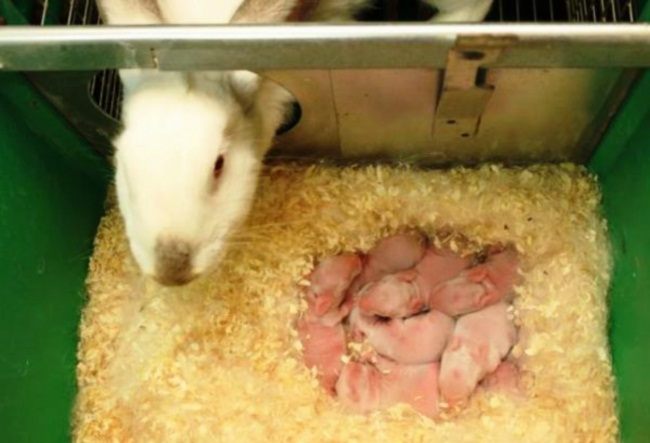

In a stationary placement, the cage is divided into two compartments of different sizes. A nest is made from a smaller department. It is separated by a solid partition. A round passage is made for the rabbit. It is made at a height of 10 cm from the bottom. The simplest device for such a nest is to block a small space across with a board placed on an edge 15 cm wide in the darkest part of the cage. It will prevent the rabbits from crawling, create additional heat. Usually, a stationary structure is made if the area of the room allows it. - Temporary construction.
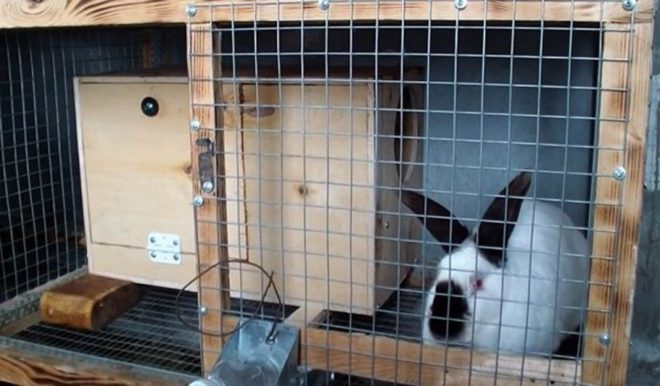

Mobile (temporary) mother liquor is not too heavy construction, but it takes more time to manufacture. It is a rectangular wooden box with a 20 cm diameter circular passage on one side and is the most practical design. It does not take up space, is easy to carry, it is easier to clean. Such a mobile mother cell is installed in the cage where the cage is expected. When the need for it disappears, such a nest can be easily removed from the rabbit house.
Basic requirements for the cage
In the wild, females give birth in burrows. The mother plant reminds them of a natural shelter, meets economic requirements. The rabbit maternity hospital has the following features:
- The design is a box with a manhole - an entrance... It is undesirable to leave the female in an open cage, this can cause stress. When the rabbit begins to worry, the hormonal background is disturbed, the body weakens. This threatens the health of the offspring, her own.
- Rabbit broodstock should not be cramped... The sizes depend on the build of the mother.
- It should be dark and cozy in the mother liquor. It is important that the female feels calm, as in nature.
- Shelter is made warm... Heating can be arranged if necessary.
- Fight against drafts. They harm the rabbit, and are dangerous for posterity. At first, the young have no wool, weak immunity. A young organism also does not know how to maintain a normal body temperature. The female warms the kids, but if it is cold in the cage, she cannot cope.
Size of the queen cell for rabbits
The dimensions of the brood nests are selected according to the size of each individual rabbit breed. The maternity ward should not be too small so that the rabbit does not feel discomfort and does not refuse to go there. With too much space, the female may begin to correct the need for it or accidentally crush the rabbits.
When choosing the size of the mother liquor, it is also worth considering the size of the cage, in which the pregnant rabbit will be located first, and then with the offspring.
It is important that the "walker" for newborns restrict third-party access to it.
| Breeds | Width, cm | Height, cm | Length, cm | Manhole diameter, cm |
| Rabbits of medium breeds | ||||
| Rabbits of medium breeds: Vienna Blue, Silver, New Zealand (animal weight 3-6 kg, body length - up to 57 cm) | 35 | 30 | 56 | 15-18 |
| Rabbits of large breeds | ||||
| California | 40 | 40 | 60 | 15 |
| Flanders | 40 | 75 | 90 | 20 |
| White Giant, Gray Giant, Butterfly | 50 | 80 | 95 | 18 |
| Dwarf breeds | ||||
| Decorative breeds (weight up to 2 kg and length up to 35 cm) | 30 | 25 | 50 | 10 |
Some tips for nesting
Experienced farmers take into account the features of materials and aspects of the behavior of eared pets during construction:
- The wires of the devices are carefully covered and masked. Otherwise, they will be nibbled. This is a serious threat to the health and life of pets.
- Sometimes there is no need for heating, for example, in the summer. The devices are removed, otherwise the rabbits will be pampered, with poor health.
- Reiki is better to choose from hardwood trees. Conifers emit an odor that scares off the female rabbit.
- A manhole made at a height of 10-15 cm from the floor is the best option. So the rabbits do not scatter, but they can explore the world through the hole.
- The floor is sometimes done with a slight slope. This makes cleaning easier.
- It is advisable not to take glass wool for insulation. It usually enters the mother liquor through the smallest cracks. Glass wool is harmful to rabbits. It hits the surface of the body, eyes, ears, mouth.
- Sometimes straw is used to insulate walls, ceilings, floors. They put it inside the "sandwich". Better not to. Straw rots quickly. As a result, heat is lost, the number of microbes grows. In order for the straw to lie longer, it must be dried, treated with anti-pest drugs. Funds should not be toxic, poisonous.
- To insulate the structure, the walls are sometimes sheathed with foam. Perhaps this is the best replacement for pressed sawdust. Even if you stuff the pieces between the sheets of plywood, the foam keeps heat well. The material is safe and inexpensive.
- The female rabbit also insulates the queen cell. They pluck the fluff from their belly, chest and prepare "bed". This happens, as a rule, a few days before the appearance of offspring. Although sometimes the rabbit does not make a nest before giving birth. This is due to undernourishment, stress, or inexperience. When a mother is not ready for childbirth, you need to follow her. Often, such females push or even eat rabbits.
We make a queen cell for rabbits with our own hands (drawings)
Required material
The material for the manufacture of the mother liquor is chosen taking into account the thermal conductivity. The lower the thermal conductivity, the warmer the rabbits will be.
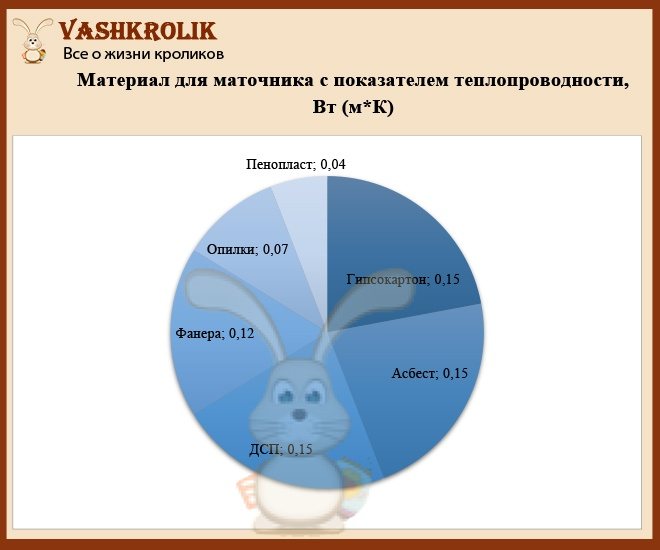

Material for mother liquor with thermal conductivity index
Many people use asbestos, glass wool and polystyrene for insulation and manufacture. But these materials are toxic and undesirable for such purposes. Wood material is preferable.
Required tool
- ruler
- pencil
- blowtorch
- door hinges
- a hammer
- drill
- nails
- self-tapping screws
- saw
- reiki
- jigsaw
- screwdriver
- roulette
Step-by-step construction guidelines
To make the uterine structure yourself, you need to prepare:
- plywood - 2 pcs. (1.5 mx 0.7 m)
- rectangular clamp
- measuring tape
- drill and screwdriver
- jigsaw
- nails, drills, screws, screws
- pencil for sketching
- a blowtorch for finishing the product.
For convenience, below are photos that reflect each stage of production.
- We draw and cut the plywood using prepared drawings. As a result, we get two rectangular identical parts (bottom and ceiling), two walls and two sides.
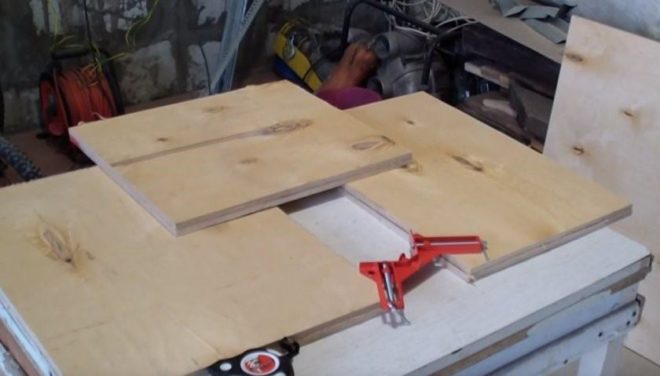

- On one of the sides we draw a circle for the manhole and cut it out with a jigsaw.
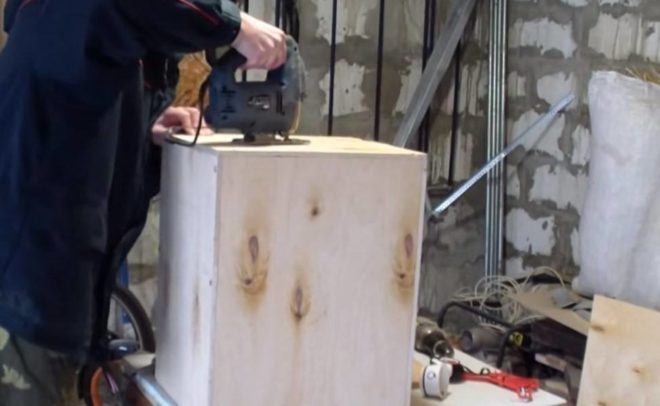

- We connect the bottom and the front wall at a right angle. We fix the corner with a clamp. Next we drill a hole and tighten a self-tapping screw or screw. In this way, we fit all the walls.
- To the rectangle that is planned under the door, we hook the door hinges and attach the handle.
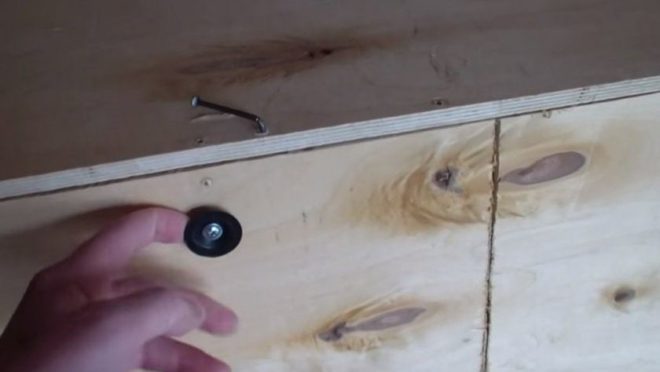

- On the ceiling, we install a limiting bar for the door. The bent nail will act as a retainer for the door and prevent it from opening freely.
- Under the round hole for the female, you need to attach a small shelf so that it does not trample the cubs while moving.
- All parts of the mother liquor are poured over with a blowtorch to smooth out all the notches and splinters.
This is how easy a birthing baby can be made for rabbits.
Usage Tips
- Instead of a door, you can simply make a hinged cover.
- It is possible to extend the operating time of the mother liquor if the bottom is knocked off with galvanized iron from the bottom.
- The primiparous rabbit should be helped to equip the nest (cover it with straw, cotton wool).
- To ensure the comfort of the rabbits with their mother, it is necessary to constantly clean.
- Disinfection of the nest is mandatory - before use and during the period of direct operation.
Video Swine for rabbits
Manufacturing process
Making a queen cell with your own hands is not difficult. In its simplest form, it is a simple box with an entrance from either side. Our mother box for rabbits will be distinguished by high wear resistance thanks to the galvanized bottom. The opening top cover allows you to clean the cage without taking out the bunnies. And double walls with a layer of sawdust will not allow you to freeze even in the coldest winter. The stage-by-stage manufacture of a medium-sized mother liquor is discussed below.
Dimensional drawing:
Step 1... Prepare plywood sheets. It is necessary to cut out of them (according to the drawing):
- 4 rectangles with a length of 56 cm and a width of 30 cm - front and back wall
- 4 rectangles 35 cm long and 30 cm wide - side walls
- 4 rectangles with a length of 56 and a width of 35 - bottom and lid
Step 2... Prepare wooden slats with a thickness of 2 cm, cut the following amount:
- 8 strips 56 cm long - for front, back, bottom and lid
- 6 slats 31 cm long - for side walls and bottom
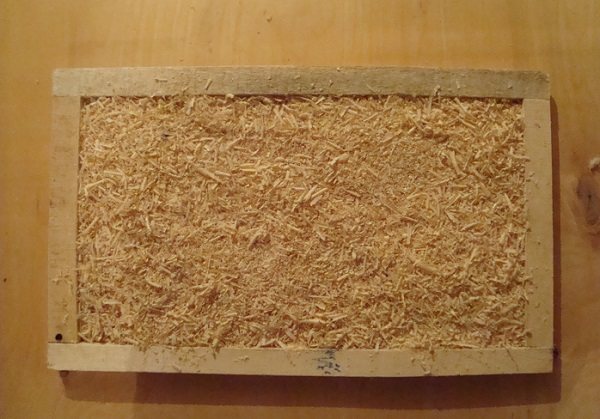

Step 3. Take one plywood, nail along the edges of the rail. Pour wood sawdust into the resulting recess and ram it tightly. You should get a frame like this (picture on the left):
Place an identical piece of plywood on top and nail it down. It turns out here is such an insulated wall (picture on the right):
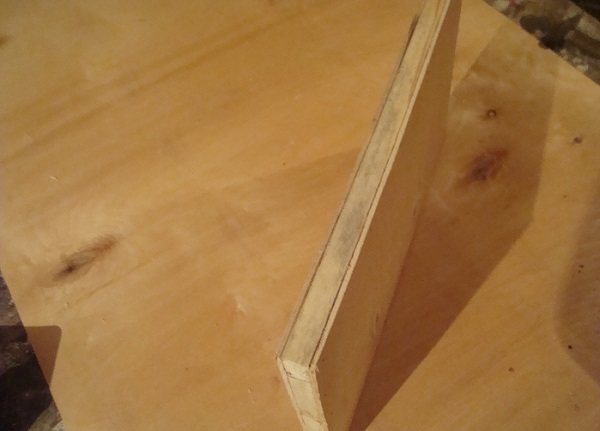

Thus, we make 4 more walls. Except for one, with a size (56 cm by 30 cm). This will be the front wall in which you need to cut a round hole for the rabbit to enter. The diameter of the hole will be 16 cm. If it is not possible to cut an even circle out of plywood with your own hands, only half of the front wall can be insulated.
The content of the mother liquor during the cold season
As a rule, rabbits do not bring babies into frost. But it is possible to artificially create conditions so that the temperature inside the rabbitry does not fall below + 10 ° C, then the animals will reproduce in winter.
Naturally, in the cold season, special attention should be paid to the nesting sections. They need to be insulated. So are the animal cages themselves. The mother liquors are insulated at the manufacturing stage. Straw, sawdust, polystyrene are poured between the walls. You can also buy specialized heating mats or films. Ordinary heating pads can also be used for heating. They are filled with warm water and placed in a cage, covered with bedding. The downside is naturally that you need to constantly change the rapidly cooling water.
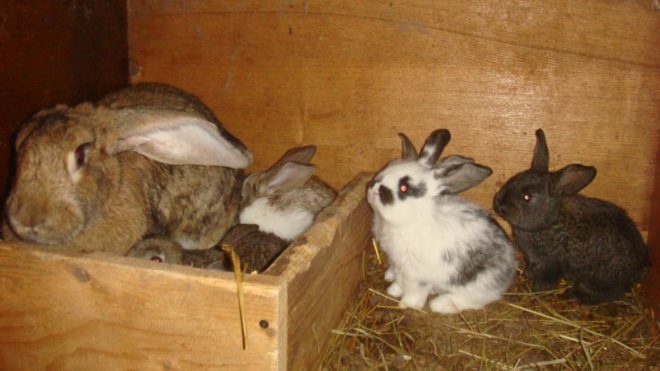

Do-it-yourself warming of the mother liquor
In warm weather, the mother liquor does not need to be especially insulated. It is enough just to put it in a cage and cover the floor of the structure with straw or dry sawdust. The rabbit herself will take care of the rest. They even pluck the fluff out of themselves in order to arrange a place for future offspring.
In winter, however, it is already necessary to take a more serious approach to the issue of heating. In cold weather, the mother plant is insulated with thick cardboard or foil. If a cage with a nest is on the street, then it is also additionally insulated. The rabbit dwelling located on the street is also sheathed with insulation.
Nowadays, farmers have started to use special heated structures. They also take electric heaters, equip cells with warm floors (infrared, film, cable) or heating pads.
But the most important thing is to maintain the correct temperature. After all, overheating is also harmful to animal health, as well as hypothermia.
Video Heated mother with your own hands
How to make film heating
It is quite easy to make a film floor in cages and queen cells for rabbits. You just need to buy a film with built-in heating elements in a specialized store. Its recommended power for the mother liquor is 140-150 W / m².It will be enough to put only 25 cm of such a "warm" floor into the nest, attach it to the bottom, connect the thermostat and connect to the network according to the instructions. The biggest advantage of film heating is its installation without filling with screed or glue.
It is worth remembering that the use of heating is necessary only on very cold days and when the additional heating is turned on, it is necessary to monitor the temperature in the mother liquor.
Important recommendations
It is not difficult to build a queen cell for rabbits with your own hands, even without carpentry skills and special drawings. However, there are some nuances that need to be taken into account:
- The size of the room should be exactly such that the rabbit and cubs have enough space to accommodate in it.
- The floor in the house for young females should be covered with straw (experienced mothers insulate it on their own).
- For construction, it is better to use deciduous trees, as the aroma of conifers may be too harsh for animals. It happened that because of this, the females abandoned their own cubs.
- The manhole provided in one of the walls of the structure must be made at a short distance from the floor. When the young rabbits have a desire to explore the world around them, it will be very difficult for them to get out of a high-located hole. However, placing the manhole too low is also undesirable, because then the kids will begin to leave the house ahead of time.
The uterus is very important when equipping a rabbit cage. It provides the opportunity for year-round offspring. In this separate house, temperature drops are minimal, there are no drafts and direct sunlight, various external stimuli have practically no effect on the well-being of the rabbit and her offspring.
Removal of the mother liquor from the cell
There is no exact rule for when to remove the queen cell from the cage. It is precisely not recommended to do this until the rabbits have reached the age of 21 days. Then you need to look at the state of the cubs. They should already be quite active, move around, eat themselves. In the cold season, the mother cell should be left in the cage for a longer time.
The brood is a place where the rabbit can safely hide and bring her droppings calmly, and it is also the “first house” for newborn rabbits. It is necessary to approach its manufacture with full responsibility. But as you can see, you can easily build it yourself at home.
What is a mother cell and what is it like
The broodstock is a special design in which the rabbit gives birth to offspring and is engaged in feeding them. The rabbits live in it until they get stronger. Then they can be transplanted into individual cells.
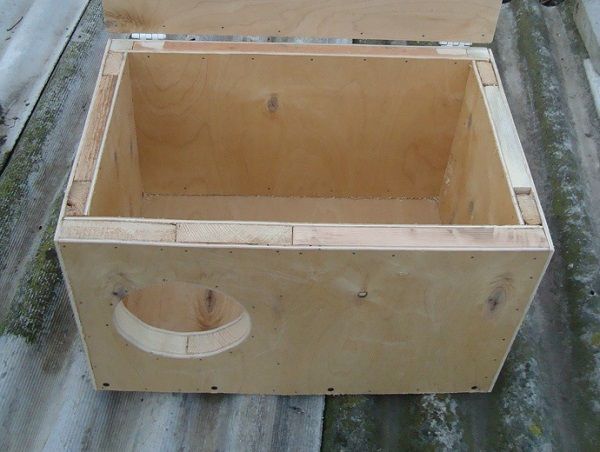

In winter, this structure, thanks to the insulation of the walls, serves as a reliable protection for babies from the cold. In addition, the female here feels safe, which has a positive effect on the feeding of the offspring.
The mother liquor is made of various solid materials and can be heated or unheated. If the assembly and materials were of high quality, then such a structure, with constant operation, will last about 2 years.
The type of construction and its dimensions are selected depending on what breed is planned to be bred. In nature, rabbits live in rather cramped burrows. Therefore, the mother cell itself, in contrast to the cage, should be cozy and small. If the structure turns out to be too large, then the rabbit can confuse it with a cage and begin to relieve it.
Today queen cells are of the following types:
- built-in. They are not very practical in terms of operation, since they are inconvenient to wash and disinfect without disturbing the animals;
- movable or removable. These designs are preferred because they are much easier to clean. As a result, breeding pets in them will be many times easier and more effective.
Which design option to choose, each livestock breeder decides on his own, relying on his own financial capabilities, skills and desire.
We make a maternity ward on our own
It is quite easy to build a mother plant., for this you just need to take into account some of the conditions for keeping animals. The rabbitry must necessarily have additional insulation, which will allow it to keep warm for a long time, even in frost.
To create a house, you need to choose materials and prepare tools.
Required tools
In order to make a queen cell for rabbits with your own hands, first of all you need prepare the following materials for work:
- a hammer;
- saw;
- screwdriver;
- nails;
- pen (pencil);
- self-tapping screws.
In addition, you should stock up on the necessary materials.
Building materials
For the mother liquor, in which newborn rabbits will be born and live, it is necessary to choose building materials:
- plywood sheets (3 mm thick) or chipboard;
- wooden boards;
- slats (2.5 mm thick) or board trims;
- loops;
- insulation.
It is desirable that the surface of the material be natural, without chemical coatings (for example, varnishes), since rabbits are very sensitive to strong odors, which may be the reason for the female's refusal to breed in this place.
It is better to double the walls in the maternity ward.... Fill sawdust (insulation) between 2 sheets of plywood. If the heat is not enough, then you should additionally purchase a heater or make it yourself. Use sawdust as insulation, as they keep heat well and are inexpensive. It is necessary to stuff the walls of the mother liquor with sawdust quite tightly. The sawdust must be dry. And you can also use other insulation, for example, glass wool, which also conducts heat well and keeps you dry. But its main drawback is that if it is not densely filled, it can get on rabbits (in the fur, mouth or eyes).
Other heaters can be used:
- straw, but its disadvantages are the development of an unfavorable environment and decay;
- asbestos;
- Styrofoam.
The rabbit's nest in the cage is a rectangular box with an entrance for the female. In such a nest, a galvanized sheet is laid on the bottom, which will make the structure wear-resistant. If you make a hinged lid on top, this will allow you to clean the cage without disturbing the rabbits, because they do not have to be removed.
To build a maternity ward it is better not to use conifers with your own hands, as they have a characteristic smell that the female may not like.
It is worth paying attention to the manhole, which should be placed low. The rabbits must be able to climb over it so that feces can be left outside. But this barrier must be done without fail, because in its absence, the cubs will be able to get out of the cage and escape from the rabbit.
You can buy a cage with an already built-in mother house. Only this can cause inconvenience, since after each brought offspring, the cage must be disinfected. And built-in structures are more difficult to clean without disturbing the rabbits.
There are removable uterine houses for sale... This design does not bring any problems. Which of the queen cells to choose is up to the owner of the animals to decide. Everyone will make a decision at their own discretion in terms of price-quality ratio.
By following the rules and instructions, you can easily build a comfortable mother house that will allow the rabbit, including such large breeds as the Californian, the Giant and the Flander, to feed and raise healthy offspring, which will bring big profits to the breeder over time.
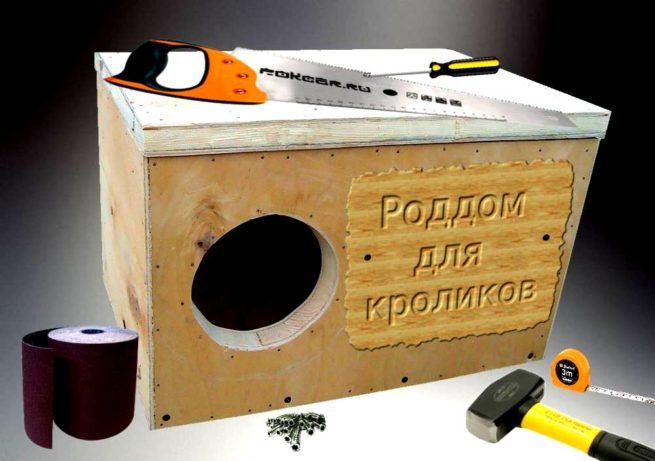

Rabbit breeders know firsthand how important the health of young animals is. To do this, a female with rabbits needs to create such conditions where she can feed the offspring, feeling safe and comfortable.Let's talk about how to build your own mother house for rabbits with a favorable internal environment, and at the same time make reproduction independent of what time of year it is outside.
A simple version of a house for a rabbit and her offspring
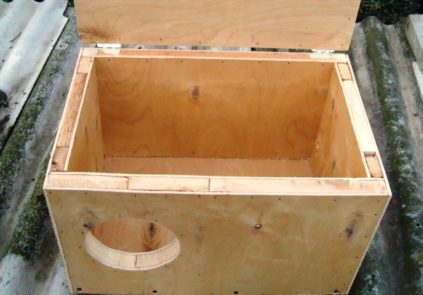

The first stage of work is making a drawing. A good drawing will help you avoid making mistakes in your calculations. It is recommended to build a mother liquor in the following sequence:
- cut out all the details, duplicating each of them (due to insulation);
- prepare edging strips;
- fill the slats on the first layer of plywood;
- lay insulation;
- fill the top layer of plywood;
- make a manhole in front;
- fasten the structure with self-tapping screws.
Thus, you need to cut two blanks for the floor, two covers and two side walls. Laz is cut out in the front wall. It can be made in the form of a circle or a square so that the rabbit can freely crawl inside.
Important!
The joints between the layers should not have gaps. If insulation (sawdust or other material) gets inside the house, animals can eat it and die.
The walls need to be connected like this: "sidewalls" are attached to the bottom of the house, and the back wall is installed last. It is best to put the lid on its hinges. So, the owner will be able to have access to the nest at any time: monitor the health of all the eared ears, feed the mother and clean the inside. If it's hot outside, a slightly open lid will allow air to enter the nest.

